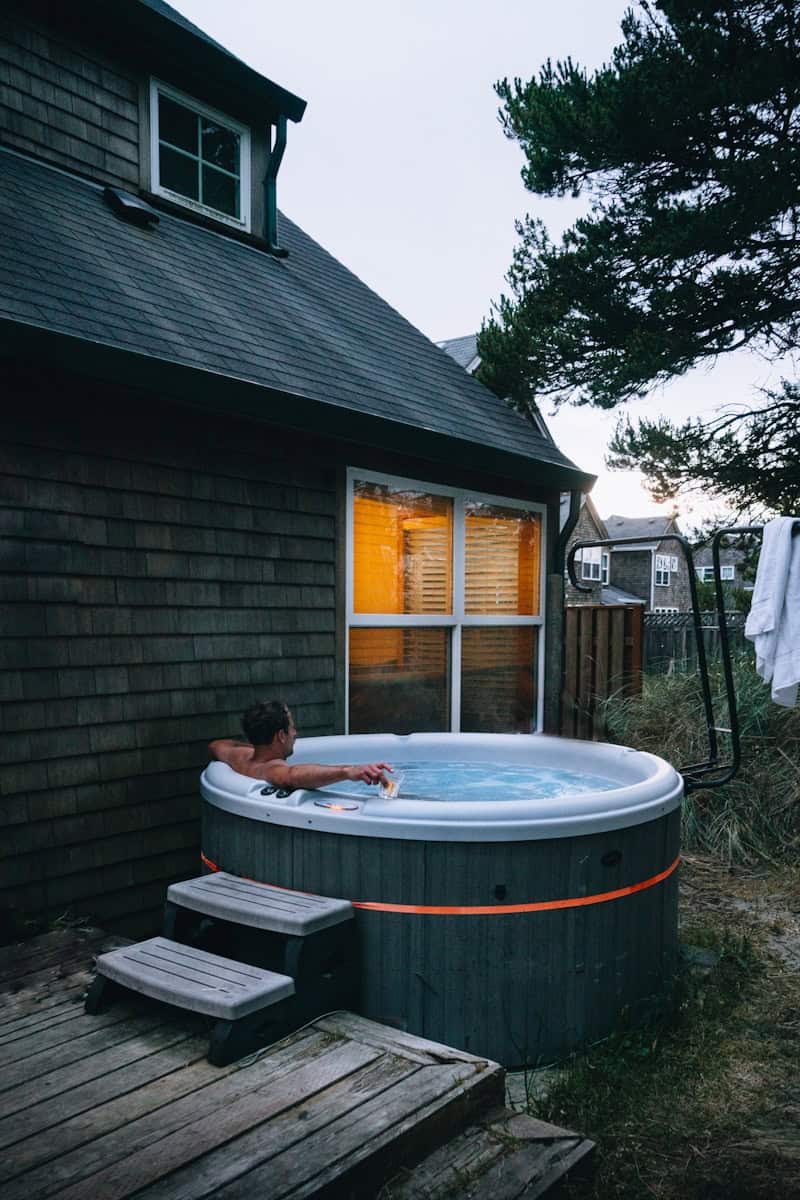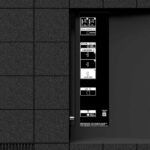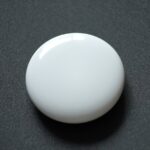Access panels for Jacuzzi tubs are essential components that provide easy entry to the tub’s inner workings. These panels allow homeowners and professionals to perform maintenance, repairs, and inspections without major demolition. Proper installation of access panels ensures quick troubleshooting and saves time and money on future repairs.
When installing a Jacuzzi tub, it’s crucial to plan for access panel placement. Many bathtubs can have access panels on the backside of the wall in an adjacent closet or room. For freestanding tubs, panels are often located on the front or sides. The size and location of panels depend on the tub model and surrounding architecture.
Homeowners should familiarize themselves with their tub’s access panel location and operation. Regular checks can prevent small issues from becoming big problems. Some panels use magnetic closures or simple latches for easy opening. Others may require tools to remove. Keeping the area around the panel clear ensures quick access when needed.
Jacuzzi Tub Access Panels: What You Need to Know
Jacuzzi tub access panels are essential for maintenance and repairs. They provide a way to reach the inner workings of your tub without needing to tear out walls or flooring.
Why are access panels important?
- Repairs: Access panels allow plumbers and technicians to easily reach plumbing components, the motor, and other parts that may need repair or replacement.
- Maintenance: They also provide access for routine maintenance like cleaning the pump and inspecting for leaks.
- Inspections: Home inspectors often use access panels to assess the condition of the tub and its components.
Types of access panels
- Removable panels: These are the most common type. They are usually secured with screws or clips and can be easily removed to provide access to the tub’s components.
- Watertight panels: These are used in areas where the panel may be exposed to water, such as on the side of the tub. They have a gasket that creates a watertight seal.
- In-line panels: These are installed in the plumbing lines and allow access to the pipes without having to cut into them.
Locating access panels
Access panels can be located in a variety of places, depending on the design of your jacuzzi tub. Common locations include:
- Behind the tub: This is a common location for accessing the pump and motor.
- On the side of the tub: This is often used for accessing the plumbing lines.
- Under the tub: Some tubs have access panels on the underside for accessing the drain and other components.
- In the surrounding wall or floor: If the tub is installed in a platform or deck, the access panel may be located in the surrounding structure.
Tip: If you can’t locate the access panel, consult your jacuzzi tub’s installation manual or contact the manufacturer for assistance.
Access panel materials
- Plastic: This is a common and affordable material for access panels. It is lightweight and easy to work with.
- Metal: Metal access panels are more durable than plastic and can be used in areas where the panel may be exposed to more wear and tear.
Installing and maintaining access panels
- Proper installation: It’s important to ensure that access panels are installed correctly to prevent leaks and other issues.
- Regular inspection: Inspect access panels periodically to ensure they are in good condition and properly sealed.
- Painting or finishing: You can paint or finish access panels to match the surrounding décor.
By understanding the importance of jacuzzi tub access panels and knowing where to find them, you can ensure that your tub is properly maintained and repaired when necessary.
Jacuzzi Tub Maintenance Tips
Regular maintenance is essential to keep your jacuzzi tub in optimal condition. Here are some key tips:
- Clean the filters: Jacuzzi tubs have filters that need to be cleaned or replaced regularly. This helps to prevent clogs and ensure that the water is clean.
- Check the water level: Make sure the water level is correct. Low water levels can damage the pump.
- Clean the jets: Use a jet cleaner or a solution of white vinegar and water to clean the jets and remove any buildup.
- Drain and refill the tub: It’s recommended to drain and refill your jacuzzi tub every 3-4 months to maintain water quality.
- Inspect for leaks: Regularly check for any signs of leaks around the tub, pump, and plumbing connections.
- Winterize the tub: If you live in an area with freezing temperatures, winterize your jacuzzi tub to prevent damage from freezing water.
By following these maintenance tips, you can prolong the life of your jacuzzi tub and enjoy its relaxing benefits for years to come.
Key Takeaways
- Access panels allow easy maintenance of Jacuzzi tubs
- Panel placement varies based on tub model and room layout
- Regular inspections through access panels prevent major issues
Understanding Access Panels for Jacuzzi Tubs
Access panels are key for maintaining jacuzzi tubs. They let you reach important parts inside the tub. The right panel makes repairs easier and keeps your tub looking good.
Types of Access Panels
Jacuzzi access panels come in different types. The most common are:
- Removable panels
- Hinged panels
- Magnetic panels
Removable panels can be taken off fully. Hinged panels open like a door. Magnetic panels stick on and come off easily.
Some panels are made to match your tub’s style. Others focus on being easy to use. Stainless steel panels are strong and last long. ABS plastic panels are light and cheap. Fiberglass panels can look like part of the tub.
Selecting the Right Size and Material
Picking the right panel is crucial. You need to think about size and what it’s made of.
Size matters a lot. Measure the space you need to cover. Make sure the panel fits well. A too-small panel won’t cover everything. A too-big panel might not fit right.
Material choice affects how the panel works and looks. Here’s a quick guide:
- Stainless steel: Strong and water-resistant
- ABS plastic: Light and easy to clean
- Fiberglass: Can match tub color and style
Think about where the panel will go. Panels near water should resist rust. Panels you see often should look nice. Pick a material that fits your needs and budget.
Installation and Maintenance
Installing and maintaining access panels for jacuzzi tubs is crucial for their longevity and performance. Proper installation ensures easy access for repairs. Regular maintenance keeps the tub in top shape.
Step-by-Step Installation Guide
- Measure the opening size carefully.
- Choose the right access panel for your jacuzzi tub.
- Mark the installation area.
- Cut the opening if needed.
- Install the frame securely.
- Attach the panel to the frame.
- Test the panel’s operation.
For curved tubs, use flexible panels that fit around edges. Ensure the panel is waterproof to protect internal components. Always follow the manufacturer’s instructions for best results.
Maintenance and Repairs
Regular maintenance keeps jacuzzi tubs running smoothly. Check the access panel monthly for signs of wear or damage. Clean it with a mild soap solution to prevent buildup.
Key maintenance tasks:
- Inspect plumbing connections
- Check the motor and circulation pump
- Look for leaks or unusual noises
- Clean or replace filters as needed
For repairs, the access panel allows easy reach to vital components. Always turn off power before servicing. If unsure, call a professional for complex repairs.
Accessibility and Upkeep
Good accessibility is key for jacuzzi tub upkeep. Place the access panel in an easy-to-reach spot. This makes routine checks and repairs simpler.
Tips for better accessibility:
- Use removable panels when possible
- Keep the area around the panel clear
- Label important components for quick identification
Regular upkeep extends the tub’s life. Wipe down the panel and surrounding area after each use. This prevents moisture damage and mold growth.
Check seals and gaskets yearly. Replace them if they show signs of wear. This maintains the panel’s waterproof qualities and protects internal parts.
Frequently Asked Questions
Access panels are crucial for jacuzzi tub maintenance. They let you reach important parts and fix issues. Here are some common questions about jacuzzi tub access panels.
How can one replace an access panel on a jacuzzi bathtub?
To replace a jacuzzi tub access panel:
- Remove the old panel carefully
- Measure the opening
- Buy a new panel that fits
- Install the new panel with screws or clips
Make sure the new panel is waterproof and matches your tub’s style.
What options are available for best-fitting access panels for a jacuzzi tub?
Access panel options for jacuzzi tubs include:
- Custom-made panels
- Universal fit panels
- Magnetic panels
- Tile-ready panels
Choose based on your tub’s shape size and your bathroom’s look.
Can an access panel for a bathtub be constructed DIY, and if so, how?
Yes you can make a DIY access panel. Here’s how:
- Measure the opening
- Cut a piece of waterproof material to size
- Add a frame if needed
- Install hinges or magnets
- Paint or tile to match your bathroom
This can save money but takes some skill.
What are the steps involved in removing the access panel on a jetted tub?
To remove a jetted tub access panel:
- Look for visible screws or clips
- Remove any caulk around the edges
- Gently pry the panel loose
- Disconnect any wires or pipes if needed
Be careful not to damage the tub or surrounding area.
Is it necessary to have an access panel for all types of tubs?
Not all tubs need access panels. But jacuzzis and heated tubs require them. They let you reach motors heaters and wiring. Standard bathtubs usually don’t need access panels.
What materials and methods are recommended for creating a custom bathtub access panel?
For a custom bathtub access panel use:
- Waterproof materials like PVC or marine-grade plywood
- Moisture-resistant paint or sealant
- Sturdy hinges or strong magnets
- Matching tile or a paintable surface
Create a frame for added strength. Make sure it’s easy to open and close.







